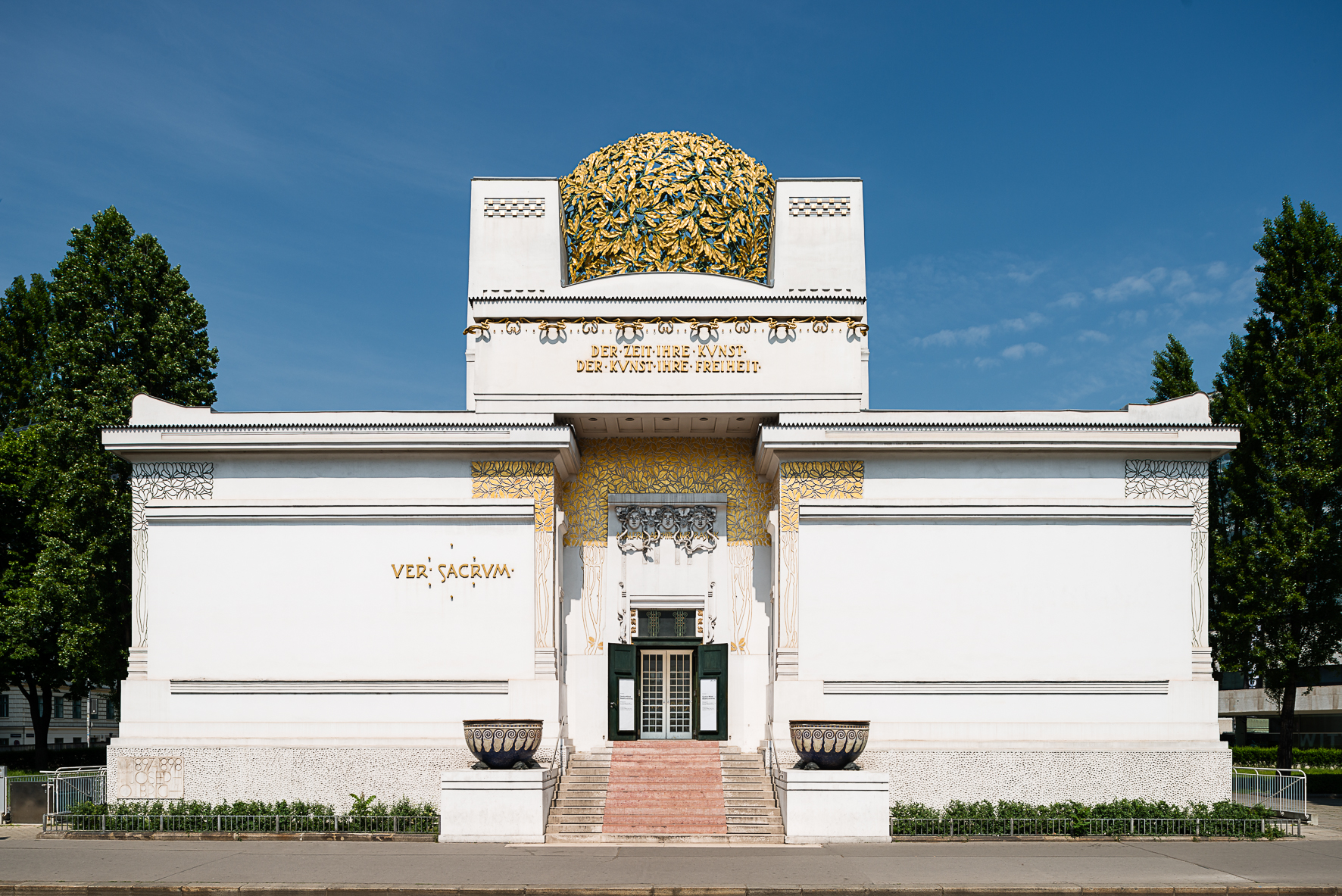
Not completed until the turn of the century, his three paintings, Philosophy, Medicine, and Jurisprudence were criticized for their radical themes and material, and were called “pornographic”. In 1894, Klimt was commissioned to create three paintings to decorate the ceiling of the Great Hall of the University of Vienna. The group’s symbol was Pallas Athena, the Greek goddess of just causes, wisdom, and the arts-of whom Klimt painted his radical version in 1898.

The government supported their efforts and gave them a lease on public land to erect an exhibition hall. The group declared no manifesto and did not set out to encourage any particular style-Naturalists, Realists, and Symbolists all coexisted. The goals of the group were to provide exhibitions for unconventional young artists, to bring the works of the best foreign artists to Vienna, and to publish its own magazine to showcase the work of members. He remained with the Secession until 1908. Klimt became one of the founding members and president of the Wiener Sezession (Vienna Secession) in 1897 and of the group’s periodical, Ver Sacrum (“Sacred Spring”).
#Gustav klimt vienna secession professional
Klimt began his professional career painting interior murals and ceilings in large public buildings on the Ringstraße, including a successful series of “Allegories and Emblems”.

They also helped their teacher in painting murals in the Kunsthistorisches Museum in Vienna. The two brothers and their friend, Franz Matsch, began working together and by 1880 they had received numerous commissions as a team that they called the “Company of Artists”. In 1877 his brother, Ernst, who, like his father, would become an engraver, also enrolled in the school. Klimt readily accepted the principles of a conservative training his early work may be classified as academic. He revered Vienna’s foremost history painter of the time, Hans Makart. Klimt lived in poverty while attending the Vienna School of Arts and Crafts (Kunstgewerbeschule), where he studied architectural painting until 1883. Klimt’s work was an important influence on his younger contemporary Egon Schiele. He subsequently accepted no more public commissions, but achieved a new success with the paintings of his “golden phase,” many of which include gold leaf. As he developed a more personal style, his work was the subject of controversy that culminated when the paintings he completed around 1900 for the ceiling of the Great Hall of the University of Vienna were criticized as pornographic. Among the artists of the Vienna Secession, Klimt was the most influenced by Japanese art and its methods.Įarly in his artistic career, he was a successful painter of architectural decorations in a conventional manner. In addition to his figurative works, which include allegories and portraits, he painted landscapes. Klimt’s primary subject was the female body, and his works are marked by a frank eroticism. Klimt is noted for his paintings, murals, sketches, and other objets d’art. By 1905, Klimt and his followers had left the group however, the Vienna Secession continued to influence modern art throughout the 20th century.Klimt an Austrian symbolist painter and one of the most prominent members of the Vienna Secession movement. In 1903 Secession members Hoffmann and Moser cofounded the Wiener Werkstätte. In eight years, the group held 23 exhibitions in Joseph Maria Olbrich’s Secessionist Gallery, alongside a monthly publication, Ver Sacrum, that promoted the art of the Vienna Secessionists. Notable members of the Vienna Secession included Josef Hoffmann, Koloman Moser, and Carl Moll, in addition to Wagner and Klimt. This pioneering group, closely associated with Art Nouveau, also strove to create a new style of architecture.
#Gustav klimt vienna secession free
The Vienna Secession, as it quickly became known, hoped to promote modern art at every level of society by presenting exhibitions free from the strict guidelines of Vienna’s annual salon. Otto Wagner described the goal of the Vienna Secession as to “show the modern man his true face.” In 1897, Gustav Klimt and his circle of artists sought to create their own unique artistic identity outside the confines of the Künstlerhaus, the traditional art academy in Vienna. Art is a universal good.” -From Ver Sacrum (The Sacred Spring) “We recognize no distinction between high and low art, between art for the rich and art for the poor.


 0 kommentar(er)
0 kommentar(er)
